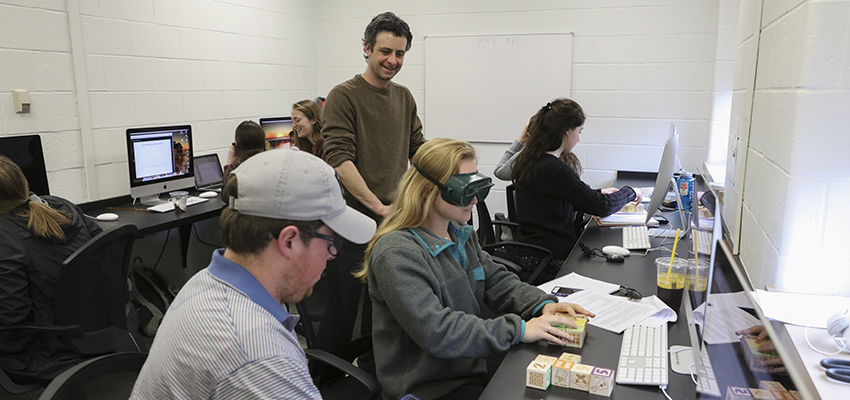
HWS News
23 June 2017 • Faculty Intro to Visual Stylometry
At a recent invited talk at the Fitchburg Art Museum (FAM) in Massachusetts, Assistant Professor of Psychology Daniel Graham presented on his research about the ways the human visual system processes artistic images.
Addressing visual processing in the retina, how visual systems evolved to process the natural visual world, and what this says about the visual appearance of human artwork, Graham's research has implications for the field of art history. It suggests that we can understand something about how humans in general respond to artistic images, independent of culture.
Graham's lecture, "Introduction to Visual Stylometry: A Neuroscientific Perspective," was part of a workshop at the FAM on Workflows for Analysis of Images and Visual Stylometry (WAIVS).
"The workshop organizers, funded by a grant from the National Endowment for the Humanities, have taken some of the computational tools that computer scientists and neuroscientists have developed and packaged them in a way that can be useful to art historians," Graham explains. "The main contribution so far of this group is an online system for performing computational visual analysis that uses a simple graphical interface (the WAIVS system). What's remarkable about this work is how interdisciplinary it is: the organizers included a philosopher, a mathematician and a computer scientist, and attendees of the workshop included museum curators, computer scientists, philosophers, art historians and artists."
Graham came away inspired to incorporate the WAIVS system into his teaching. "Because the interface doesn't require computer science expertise, students studying art history, computer science and visual perception all stand to benefit from lessons built around the WAIVS system. I am currently thinking about how to include this kind of material in my upper level courses on visual perception," he says.
In addition, Graham's work was featured in a cross-sectional study which recently appeared in a special issue of the journal Frontiers in Human Neuroscience. In the article, Graham, Cameron Pugach 15 and their colleague Helmut Leder of the University of Vienna in Austria explored the stability of aesthetic preferences.
A member of the HWS faculty since 2012, Graham earned his B.A. in physics from Middlebury College and his M.S. in physics and Ph.D. in psychology from Cornell University.

